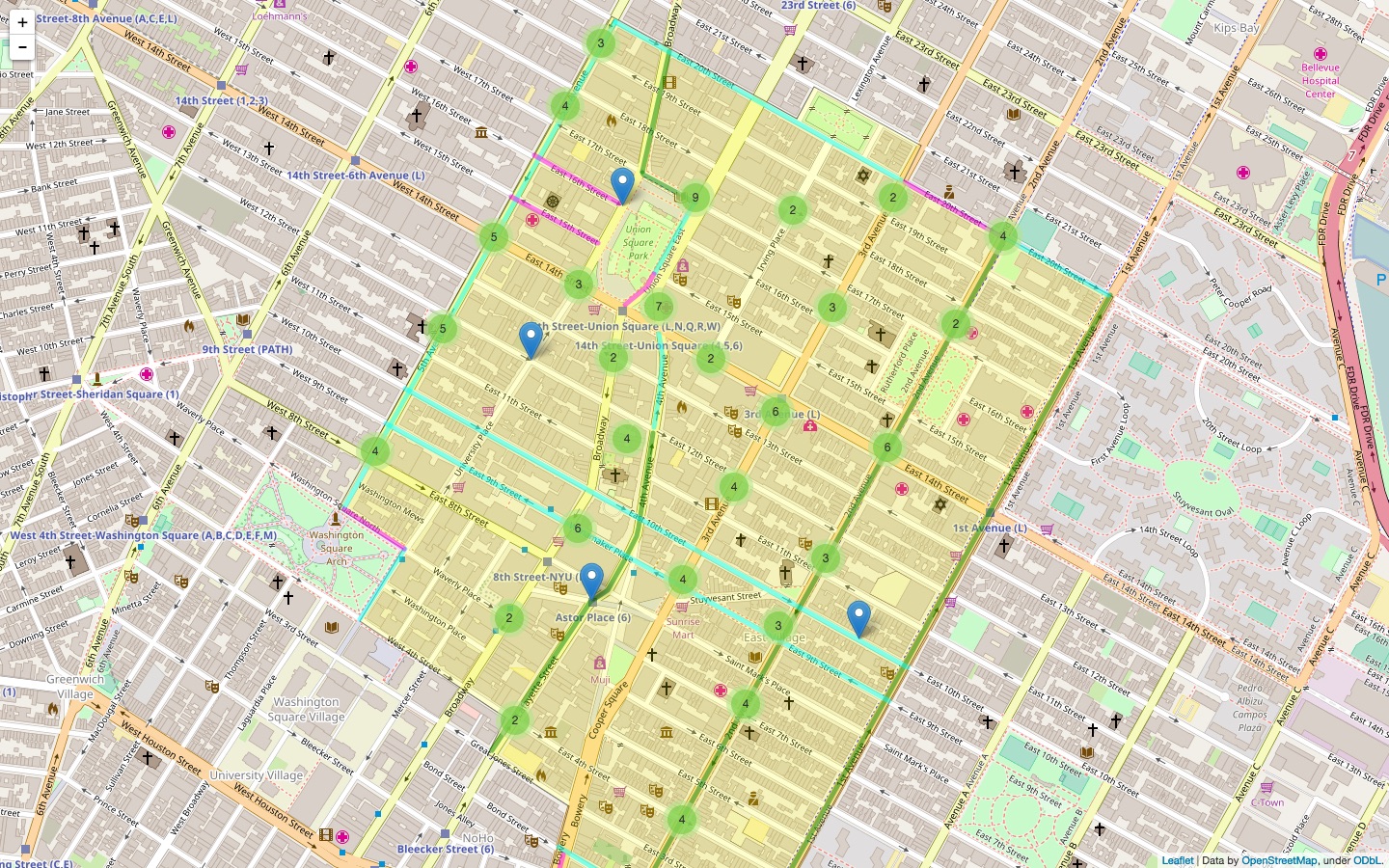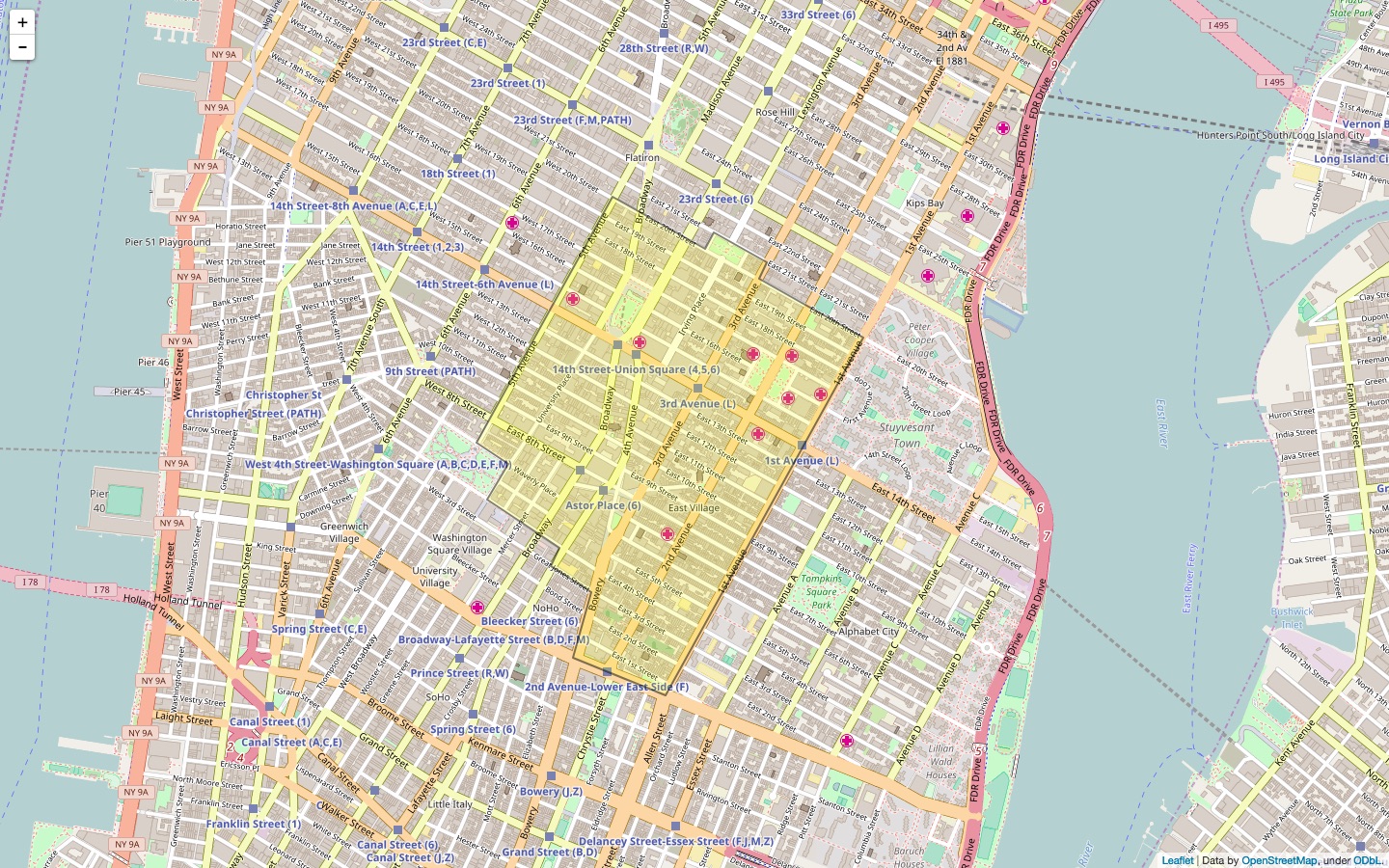
About the project
This special section of the Macaulay Honors seminar "Shaping the Future of New York" explored urban issues facing New York City's future from affordable housing to transportation. But while students from other sections of the course grueled over 20-page papers, I got the amazing opportunity to explore these topics through the lenses of data, design and code, specifically the Python programming language!
My final project studied the effectiveness of bike lanes in New York City. We created a Python program that analyzed a dataset on vehicle-bicycle collisions and created a snazzy visualization of accident occurrences in Union Square.

Process
I go over the final project on this neat summary page made for the class. Our data came from NYC Open Data and we coded the program using the Python packages pandas and folium.
What's next?
You wouldn't have guessed...
...but to be quite honest, everything! I credit this class with sparking my (as of writing this) career interests in UX design and web design. This firsthand exposure to design and data science was pretty much my welcome into the world of 21st-century problem solving.
Safety for cyclists (and everyone else, of course)
In the future, I'd like to expand on my final project, and the topic of bike safety in NYC, further. In the semester prior, I began biking to and from school as a way to stay healthy and save money on transportation. It turned out to be an amazing choice (and if you haven't done so recently, I highly recommend you take a weekend to get some fresh air and ride your bike!)
Yet although bikes are a ubiquitous part of New York City's streets, there's still a lot of work to be done in making sure that the roads are safe for everyone. I would love to use what I've learned in data collection, analysis, and visualization to explore more strategies for mitigating the risk of accidents. (By the way, while we're talking about design and bike safety, check out the "Dutch reach"—a really simple yet intuitive tactic to avoid hitting cyclists on your way out of the car.)
The future and beyond
Finally, I admit that in the semester immediately before this course, I had had a terrible experience with a computer science class. I left thinking that there was no hope of ever entering the computer science field. However, the interdisciplinary nature of this class helped me rekindle my interest in coding, and ignite a new one in data science! Even if hard STEM isn't my forte, I'm excited to learn more about what data science holds in store for the future of human society, and the techniques of program design that will get us there.